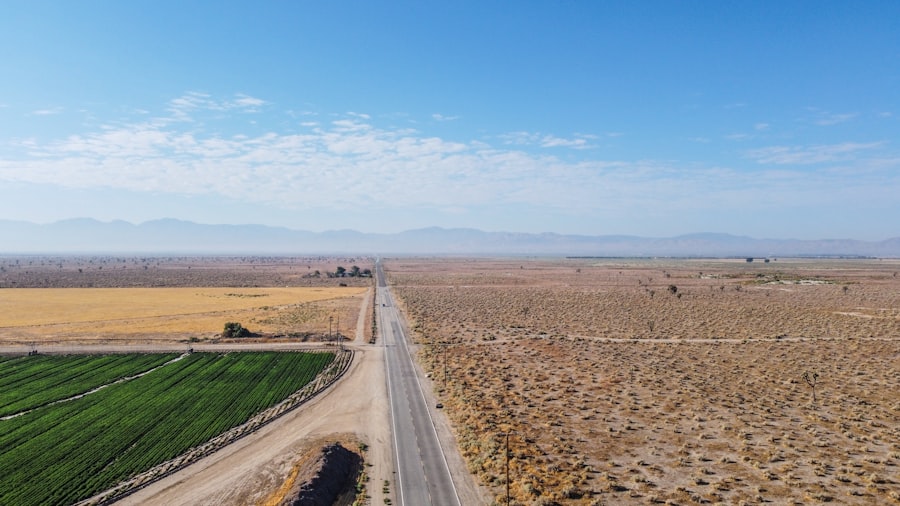The Mysterious Beauty of Chocolate Hills
Description
The Chocolate Hills, a geological marvel located in the Bohol province of the Philippines, have captivated visitors and researchers alike with their unique conical shapes and lush green landscapes. The origin of these hills is steeped in both scientific inquiry and local folklore. The name “Chocolate Hills” derives from the brown hue that the hills take on during the dry season, resembling mounds of chocolate.
This striking visual transformation has made the hills a popular tourist destination, drawing thousands of visitors each year who are eager to witness this natural wonder. The formation of the Chocolate Hills is believed to date back millions of years, with various theories attempting to explain their genesis. One prevalent theory suggests that they were formed through a combination of geological processes, including the uplift of limestone and subsequent erosion.
Over time, the limestone was shaped by rainwater and other natural elements, leading to the creation of these distinctive hills. The landscape is characterized by over 1,200 individual hills, each varying in height and size, which adds to the overall allure of this natural phenomenon.
Key Takeaways
- Chocolate Hills are a geological formation in the Bohol province of the Philippines, with a unique origin story involving a giant’s tears and a broken heart.
- The geological formation of Chocolate Hills is a result of limestone weathering and erosion over millions of years, creating over 1,200 cone-shaped hills.
- The unique flora and fauna of Chocolate Hills include various species of plants, birds, and mammals, some of which are endemic to the area.
- Chocolate Hills hold cultural significance to the Filipino people, symbolizing unity and strength, and are a popular tourist attraction.
- The legend and myths surrounding Chocolate Hills involve tales of giants, forbidden love, and battles between supernatural beings.
The Geological Formation of Chocolate Hills
The geological formation of the Chocolate Hills is a fascinating study in sedimentary processes and erosion. These hills are primarily composed of limestone, which is a sedimentary rock formed from the accumulation of marine organisms over millions of years. The region was once submerged under a shallow sea, where coral reefs thrived.
As tectonic activity caused the land to rise, the sea receded, leaving behind a landscape rich in limestone deposits. Erosion played a crucial role in shaping the Chocolate Hills into their current form. Rainwater, which is slightly acidic due to dissolved carbon dioxide, gradually wore away the limestone, creating depressions and valleys.
This process, known as karst topography, is responsible for the smooth, rounded shapes of the hills. The unique conical formations are a result of differential erosion, where softer materials erode more quickly than harder ones. The result is a landscape dotted with hills that rise abruptly from the surrounding plains, creating a striking visual contrast.
The Unique Flora and Fauna of Chocolate Hills

The biodiversity surrounding the Chocolate Hills is as remarkable as their geological features. The area is home to a variety of plant species that thrive in the unique limestone soil. Grasses and shrubs dominate the landscape, but during the rainy season, vibrant wildflowers bloom, adding splashes of color to the green hillsides.
The flora not only contributes to the aesthetic appeal of the region but also plays a vital role in maintaining the ecological balance. In addition to its plant life, the Chocolate Hills are also home to diverse fauna. Various species of birds can be spotted soaring above the hills, including endemic species such as the Philippine tarsier, one of the world’s smallest primates.
These tiny creatures are known for their large eyes and nocturnal habits. The presence of such unique wildlife highlights the ecological significance of the area and underscores the importance of conservation efforts to protect these habitats from human encroachment and environmental degradation.
The Cultural Significance of Chocolate Hills to the Filipino People
| Aspect | Significance |
|---|---|
| Geological Formation | Unique and rare natural formation |
| Local Legends | Associated with folklore and myths |
| Tourism | Major attraction for visitors and source of income |
| Cultural Symbol | Representative of Filipino identity and pride |
The Chocolate Hills hold profound cultural significance for the Filipino people, particularly for those living in Bohol. They are not merely a natural wonder; they are woven into the fabric of local identity and heritage. For many residents, these hills symbolize resilience and beauty, serving as a source of pride for the community.
The hills are often featured in local art, literature, and folklore, reinforcing their status as an iconic landmark. Moreover, the Chocolate Hills have become an integral part of Bohol’s tourism industry, providing economic opportunities for local residents. The influx of tourists has led to the development of various businesses, including guided tours, souvenir shops, and local eateries that showcase traditional Filipino cuisine.
This economic boost has allowed communities to thrive while fostering a sense of stewardship over their natural resources. As such, the Chocolate Hills are not only a geological wonder but also a vital component of Bohol’s cultural and economic landscape.
The Legend and Myths Surrounding Chocolate Hills
The allure of the Chocolate Hills extends beyond their physical beauty; they are steeped in local legends and myths that add an enchanting layer to their story. One popular legend tells of two giants who engaged in a fierce battle over a beautiful maiden. After days of fighting, they eventually reconciled but left behind their massive piles of stones and dirt, which transformed into the hills we see today.
This tale not only explains the origin of the hills but also reflects the rich storytelling tradition prevalent in Filipino culture. Another myth suggests that the hills were once giant rice cakes that were left out to dry under the sun. When they hardened into their current form, they became permanent fixtures in the landscape.
Such stories serve to connect the people with their environment, imbuing natural features with cultural significance and moral lessons. These legends are often shared with visitors, enhancing their experience and deepening their appreciation for this remarkable site.
The Best Time to Visit Chocolate Hills

When planning a visit to the Chocolate Hills, timing can significantly enhance the experience. The best time to explore this natural wonder is during the dry season, which typically runs from November to May. During these months, visitors can enjoy clear skies and pleasant temperatures, making it ideal for outdoor activities such as hiking and photography.
The hills take on their characteristic brown color during this period, resembling chocolate mounds and providing a stunning backdrop for photographs. Conversely, visiting during the rainy season can offer a different perspective on the landscape. While the hills remain lush and green during this time, heavy rainfall can lead to muddy trails and limited visibility due to fog.
However, some travelers may find beauty in this verdant scenery and enjoy fewer crowds as many tourists tend to avoid visiting during inclement weather. Ultimately, whether one chooses to visit during the dry or rainy season depends on personal preferences and desired experiences.
Conservation Efforts to Preserve Chocolate Hills
As awareness grows regarding environmental issues and climate change, conservation efforts aimed at preserving the Chocolate Hills have become increasingly important. Local government units and environmental organizations have initiated various programs to protect this unique landscape from degradation caused by tourism and urban development.
Education plays a crucial role in these conservation initiatives. Local communities are encouraged to participate in awareness campaigns that highlight the importance of preserving natural resources for future generations. By fostering a sense of ownership among residents and visitors alike, these programs aim to ensure that the ecological integrity of the Chocolate Hills remains intact while still allowing for responsible tourism that benefits local economies.
Other Natural Wonders in the Surrounding Area of Chocolate Hills
The Chocolate Hills are not alone in their natural splendor; they are part of a broader landscape rich with other natural wonders that beckon exploration. Nearby attractions include the Loboc River, known for its stunning turquoise waters and lush surroundings.
Another notable site is the Tarsier Sanctuary in Corella, where visitors can observe these fascinating primates in their natural habitat. The sanctuary emphasizes conservation efforts while providing educational experiences about these unique creatures. Additionally, Bohol is home to beautiful beaches such as Alona Beach on Panglao Island, where visitors can relax on white sandy shores or engage in water sports like snorkeling and diving.
Together with the Chocolate Hills, these attractions create a diverse tapestry of natural beauty that showcases Bohol’s ecological richness and cultural heritage. Each site offers its own unique experiences while contributing to an overarching narrative about the importance of preserving these treasures for future generations to enjoy.
If you’re interested in exploring more about the Philippines, you may want to check out this article about the Line APK 13.21.0 download for Android, the latest version available. This app allows users to connect with friends and family through messaging, voice and video calls, and much more. It’s a great way to stay in touch while learning about amazing places like the Chocolate Hills. You can read more about it here.
FAQs
What are the Chocolate Hills?
The Chocolate Hills are a geological formation located in the Bohol province of the Philippines. They are made up of around 1,200 to 1,776 conical limestone hills, which are covered in green grass that turns brown during the dry season, giving them a chocolate-like appearance.
How were the Chocolate Hills formed?
The exact formation process of the Chocolate Hills is still a subject of debate among geologists. However, it is widely believed that they are the result of the uplift of coral deposits and the action of rainwater and erosion over millions of years.
What is the significance of the Chocolate Hills?
The Chocolate Hills are a major tourist attraction in the Philippines and are considered a natural wonder. They have been declared the country’s third National Geological Monument and are also proposed for inclusion in the UNESCO World Heritage List.
Can visitors explore the Chocolate Hills?
Yes, visitors can explore the Chocolate Hills by climbing to the top of some of the hills, where they can enjoy panoramic views of the surrounding countryside. There are also viewing decks and platforms for tourists to take in the beauty of the landscape.
Is there any wildlife in the area of the Chocolate Hills?
The area surrounding the Chocolate Hills is home to a diverse range of flora and fauna, including various species of birds, butterflies, and plants. The hills are also part of the Chocolate Hills Complex, which includes a protected area for conservation and ecotourism.





